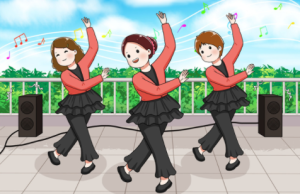Square Dancing: A Melody of Unity, Not a Symphony of Disruption
- 广场舞百科
- 2024-03-31 12:04:26
- 38
Content:

Square dancing has become an integral part of urban culture in recent years. It's a harmonious blend of exercise, social interaction, and cultural expression. However, as with any popular activity, it has not been without its share of controversies. The question of whether square dancing should be forbidden has been a hotly debated topic. In my opinion, prohibition is not the answer, but regulation and mutual understanding are key to balancing the needs of dancers and non-dancers alike.
The current status of square dancing is one of both popularity and conflict. In cities across our nation, squares are filled with music and movement as people of all ages come together to dance. It's a heartwarming scene of community engagement and cultural continuity. The dances provide a fun and accessible form of exercise, helping to promote physical health and mental well-being. Moreover, square dancing fosters social connections, building a sense of unity and camaraderie among participants.
However, the loud music that accompanies these dances has been a source of consternation for those living nearby. The noise can disrupt the peace and quiet that residents desire, especially in the early morning or late evening. It's important to acknowledge these concerns and not dismiss them as trivial. After all, the right to a peaceful living environment is as valid as the right to leisure activities.
To address the issue, I firmly believe that a balanced approach is necessary. Banning square dancing is not the solution, as it would rob many of a valuable and enjoyable pastime. Instead, we should focus on regulating the timing and volume of the music. This would allow dancers to continue their activities while respecting the tranquility of residential areas.
Firstly, designating specific times for square dancing can be an effective solution. Local authorities could collaborate with community organizations to establish guidelines for when music can be played. For instance, dances could be scheduled during daylight hours or in the late afternoon when most people are awake and less likely to be disturbed. By setting clear time limits, we can ensure that the rights of both dancers and non-dancers are respected.
Secondly, it's crucial to manage the volume of the music. Noise pollution is a legitimate concern, and measures should be taken to address it. The use of noise limiters or headphones for the dancers can significantly reduce the noise levels. Additionally, choosing more secluded locations for the dances, away from residential areas, can also minimize disturbances.
Furthermore, it's important to foster a sense of community responsibility among square dancers. Encouraging them to be mindful of their surroundings and the impact of their activities on others can lead to more considerate behavior. Education and awareness campaigns can play a significant role in this regard.
Square dancing is not just a recreational activity; it's a cultural heritage that we should cherish and protect. It brings people together, promotes physical and mental health, and contributes to the cultural richness of our society. Banning it would be a loss for the community at large.
In conclusion, the question of whether square dancing should be forbidden is a complex one. It requires a nuanced approach that takes into account the rights and needs of all stakeholders. By regulating the timing and volume of the music and promoting mutual understanding, we can find a harmonious coexistence between the dancers and the residents. Let's work together to ensure that the melody of unity in square dancing is not drowned out by a symphony of disruption.
免责声明:本网站上的所有文章内容均来自互联网。本网站仅在法律允许的范围内使用、分享和传播这些内容,不违反任何版权或知识产权法。如发现本站有涉嫌抄袭侵权/违法违规的内容,请发送邮件25538@qq.com举报,一经查实,本站将立刻删除。
本文链接:https://www.zhuangrou.com/gcw/3338.html



















